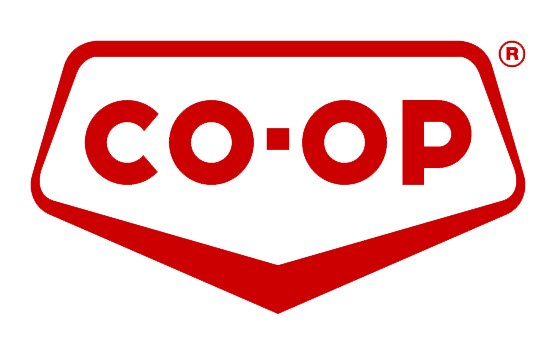POSITION SUMMARY
The Trackman installs and repairs railroad track on a specified territory of railroad. Safely operates spike pullers and spike drivers: removes old spikes, drives new spikes, and performs related maintenance to railroad track that meet department and company goals, and safety standards.
The Trackman demonstrates and adheres to the company values of: safety, honesty, ownership, respect and teamwork to ensure successful partnerships with customers and employees that result in OmniTRAX’s continued success.
ESSENTIAL RESPONSIBILITIES
Ensure compliance with all railroad rules and regulations for safety and operations
Work safely in a construction/field environment following the safety rules and carrying out the work in a manner that promotes a safe work environment
Operate spike pullers, spike drivers to perform construction and maintenance tasks associated with railroad tracks
Raise rail using track jack to facilitate removal and installation of railroad ties
Drill holes with power drill through rails for bolt insertion
Operate track-wrench machine to tighten and/or loosen bolts at rail joints
Operate rail saw to cut rails into specified lengths
Drive company vehicles
OTHER DUTIES
Work safely to prevent on the job accidents and injuries
Wear required protective equipment such as: hard hats, hearing protection, safety-toe boots or safety glasses
Comply with all safety rules and instructions including the use of proper personal protective equipment and Canadian Rail Operating Rules (CROR)
Work hours may include a nonstandard workweek, overtime and various shift work
Perform other duties and projects assigned
SUPERVISORY RESPONSIBILITIES
None
REQUIRED QUALIFICATIONS, KNOWLEDGE, SKILLS, AND ABILITIES
18 years of age or older
Operate hand tools, including: wrenches, sockets, screwdrivers, measuring tapes etc.
Operate power tools and hydraulic equipment, including: portable grinders, rail saws, spike pullers, track wrench machines, power drills, track jack
Apply commonsense understanding to carry out detailed, but uninvolved written or verbal instructions
Read and follow safety manuals, operating and maintenance instructions, test materials, drawings, schematics, and procedure manuals, gauges and dials on precision measuring tools
Perform basic shop math concepts to calculate figures and amounts such as: area, circumference, length, distance, and volume
Write legibly to complete routine reports, and complete required testing
Familiar with and adhere to track Safety Standards in work completion
Pass written examinations on the safe operations of trains and maintenance of way standards
Effectively communicate with all level of employees and business associates in a clear, concise and professional manner
Basic Computer skills
Demonstrate problem solving and troubleshooting skills resulting in effective resolution
Professional integrity and accountability
Work in fast-paced, collaborative environment
REQUIRED CERTIFICATIONS AND LICENSES
Valid Driver’s License – Class 5; pass medical certification and Drivers Qualification File, pass Drug & Alcohol testing
PREFERRED QUALIFICATIONS, KNOWLEDGE, SKILLS, AND ABILITIES
Previous experience in Rail Transportation, Supply Chain Logistics, Manufacturing and/or Oil & Gas industries
High School Diploma or equivalent
PREFERRED CERTIFICATIONS AND LICENSES
Class 1 license
WORK ENVIRONMENT
Exposure to hot, cold, wet, humid, or windy conditions caused by the weather including: snow, rain, heat, and sub-freezing temps
TRAVEL
Daily travel as business requires during scheduled work hours
PHYSICAL REQUIREMENTS
Strength
Occ
Freq
Cons
Weight/ Force
Side
Height From
Height To
Lifting - "136-pound Plate"
X
18.9 lb
Two Hands
0 in
40 in
Lifting - Lining Bar
X
26 lb
Two Hands
0 in
40 in
Lifting - Claw Bar
X
30.7 lb
Two Hands
0 in
60 in
Lifting - Impact Wrench
X
31 lb
Two Hands
0 in
40 in
Lifting - Portable Derail
X
44.3 lb
Two Hands
0 in
40 in
Lifting - Track Jack
X
48.5 lb
Two Hands
0 in
40 in
Lifting - Compromise Bar (136/115)
X
53.8 lb
Two Hands
0 in
40 in
Lifting - 136-pound Angle Bar
X
56.1 lb
Two Hands
0 in
40 in
Lifting - 136-pound Angle Bar
X
58.8 lb
Two Hands
0 in
40 in
Lifting - Tools, Parts and Equipment
X
65 lb
Two Hands
0 in
60 in
Strength
Occ
Freq
Cons
Weight/ Force
Side
Height
Rotation
Grip Pattern
Hand Spread
Pushing - Manual Track Wrench
X
106 lb
Two Hands
35 in
Neutral
Cylinder
Pushing - Spike Puller/Claw Bar
X
118.8 lb
Two Hands
Waist
Pronated
Hook
Pushing - Ergo Bow Switch
X
133.7 lb
Two Hands
35 in
Neutral
Cylinder
Pulling - Hydraulic Spike Driver
X
60.5 lb
Two Hands
26 in
Pronated
Cylinder
13 in
Pulling - Hydraulic Spike Puller
X
63.9 lb
Two Hands
34 in
Pronated
Cylinder
10 in
Pulling - Ergo Bow Switch
X
75.1 lb
Two Hands
35 in
Neutral
Cylinder
Pulling - High Stand Switch
X
87 lb
Two Hands
36 in
Pronated
Cylinder
Pulling - Rail Turner 39-foot Rail (90 lb)
X
88.3 lb
Two Hands
Waist
Neutral
Cylinder
Pulling - 10-Foot Tie with Tie Tongs
X
119.1 lb
Two Hands
30 in
Neutral
Hook
Pulling - Drag 10-Foot Tie with Tie Tongs
X
174.7 lb
Two Hands
25 in
Neutral
Hook
Upper Body
Occ
Freq
Cons
Description
Reaching - Below Knee
X
Extending hand(s) and arm(s) below the level of the knee.
Reaching - Over Shoulder
X
Extending hand(s) and arm(s) above shoulder level.
Reaching - Knee to Shoulder
X
Extending hand(s) and arm(s) between knee and shoulder level.
Handling - Both
X
Seizing, holding, grasping, turning, or otherwise working with hands.
Fingering - Fine Motor Manipulation
X
Picking, pinching, or otherwise working primarily with fingers.
Cervical Flexion/Extension
X
Flexing and/or extending at the cervical spine.
Rotation - Cervical
X
Rotating at the cervical spine.
Rotation - Thoracic & Lumbar
X
Rotating at the thoracic and lumbar spine.
Lower Body
Occ
Freq
Cons
Description
Sitting
X
Remaining in a seated position.
Standing
X
Remaining on one’s feet in an upright position without moving about.
Walking
X
Moving about on foot. Walk on uneven surfaces.
Climbing
X
Ascending or descending between two points.
Balancing
X
Maintaining body equilibrium to prevent falling.
Stooping
X
Bending body forward by bending spine at the waist.
Kneeling - Two Knees
X
Bending legs at knees to come to rest on one or both knees.
Crouching/Squatting
X
Bending body downward and forward by bending legs and spine.
Occ = Occasional; defined as 1-33% of a usual and customary workday.
Freq = Frequent; defined as 34-66% of a usual and customary workday.
*Cons = Constant; defined as 67-100% of a usual and customary workday.
** Not all tasks required at each location. Position and physical demand is representative, but individualized assessment may be necessary.



















